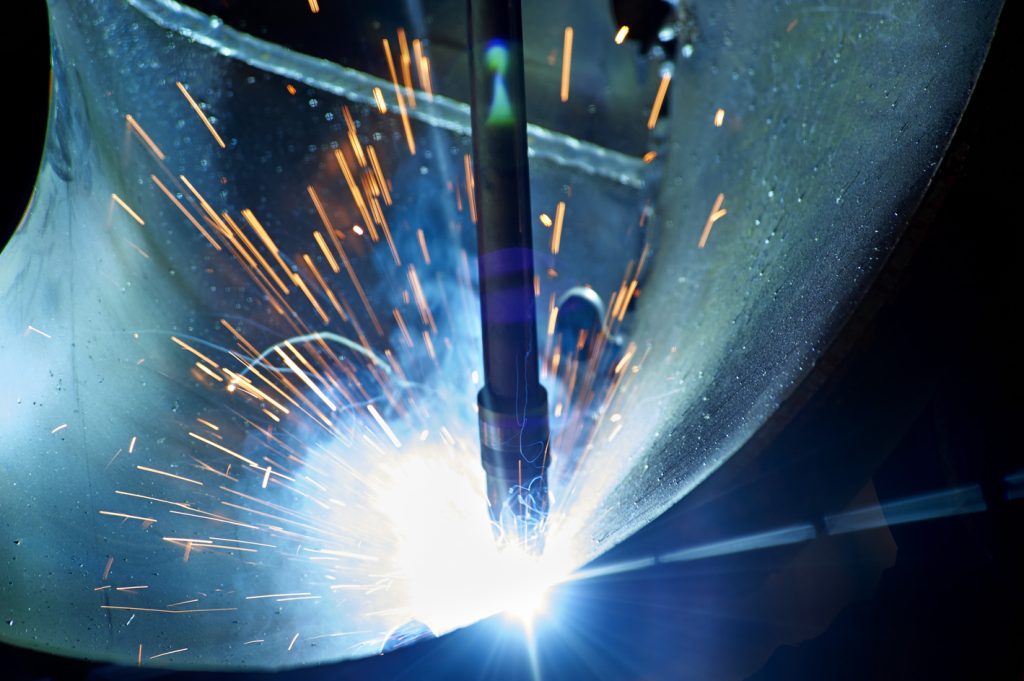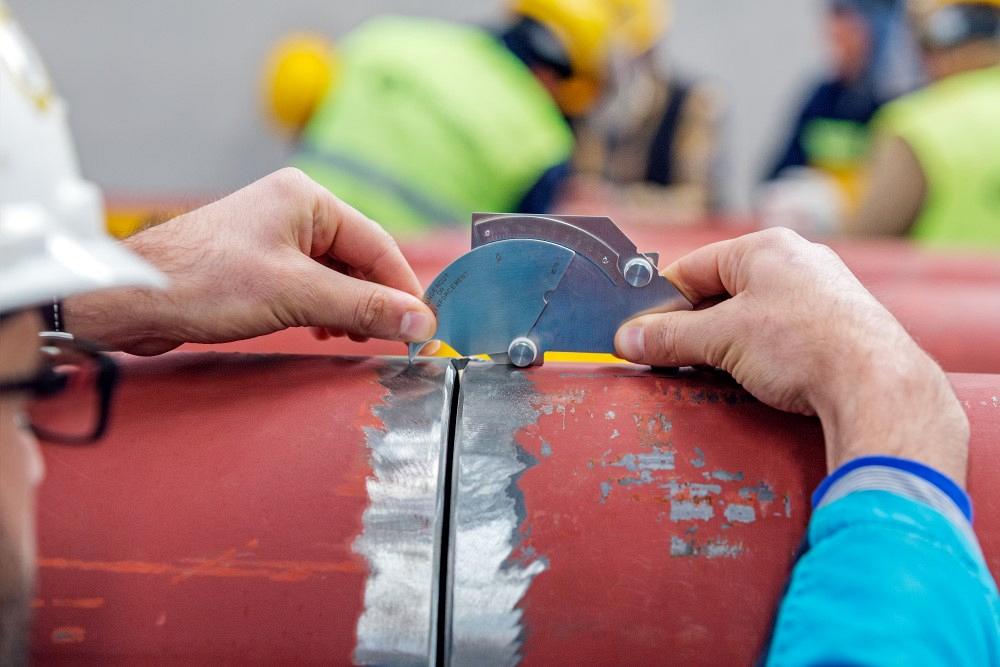How to Select the Right Welding Inspection Racine Supplier for Your Requirements
How to Select the Right Welding Inspection Racine Supplier for Your Requirements
Blog Article
Innovative Approaches to Fillet Weld Inspection and Testing: Enhancing Weld High Quality and Conformity Specifications
In the realm of welding, the quality and honesty of fillet welds play an essential role in making certain the architectural strength and dependability of various industrial elements. With the continuous drive for enhanced performance and conformity with stringent standards, the exploration of innovative approaches to fillet weld inspection and screening has actually come to be critical.

Advanced Non-Destructive Testing Techniques
Using cutting edge innovations, progressed non-destructive testing techniques play a critical role in ensuring the stability and top quality of fillet welds. These methods, such as phased range ultrasonic screening (PAUT) and magnetic bit screening (MPT), offer detailed understandings right into the weld's inner framework without creating any type of damage to the product. PAUT, as an example, makes use of several ultrasonic elements to examine the weld from various angles, offering a detailed visualization of possible flaws like lack of blend or splits.
Similarly, MPT is effective in discovering surface-breaking flaws by applying an electromagnetic field and iron fragments to the weld area. This method is specifically valuable for identifying gaps that may jeopardize the weld's stamina. By utilizing these advanced non-destructive screening techniques, weld assessors can precisely analyze the quality of fillet welds, making certain compliance with market requirements and laws. The capacity to detect imperfections beforehand not only boosts weld quality yet likewise prevents expensive rework or failings in structural integrity, underscoring the value of these cutting-edge screening strategies in welding evaluations.
Robotics and Automation in Inspection
The assimilation of robotics and automation has reinvented the evaluation process for fillet welds, enhancing effectiveness and precision in high quality assessment. Robotics use precise control and repeatability in checking welds, making sure trustworthy and consistent outcomes. Automated systems can be set to follow particular evaluation paths, making certain complete insurance coverage of welds and minimizing the danger of human mistake.
Robot evaluation systems furnished with sophisticated sensors can find and gauge weld attributes with high precision, offering thorough information for analysis. These systems can recognize problems such as splits, lack of blend, and porosity, allowing prompt restorative activities to be taken. Furthermore, robotics and automation enable for real-time data collection and evaluation, offering prompt comments to drivers and promoting fast decision-making procedures.
In addition, making use of robotics and automation in fillet weld examination improves general performance by reducing evaluation times and enhancing assessment throughput. By simplifying the evaluation procedure, manufacturers can ensure weld high quality and conformity criteria are fulfilled successfully, inevitably resulting in set you back financial savings and boosted product high quality.
Using Expert System for Analysis
Expert system plays a critical role in improving the effectiveness and accuracy of analysis in fillet weld assessment procedures. By using the power of AI, inspectors can streamline the evaluation of weld top quality and conformity requirements, causing much more reliable and precise outcomes. AI formulas can quickly refine vast quantities of data from weld examinations, finding problems or inconsistencies that may be testing to understand the nude eye. This advanced innovation allows real-time tracking of weld quality, enabling immediate rehabilitative actions to be taken if any issues are found.
Moreover, AI systems can gain from previous assessment information, constantly enhancing their ability to recognize potential problems and deviations in fillet welds. This adaptive discovering capability improves the total quality control procedure, reducing the likelihood of human mistake and guaranteeing that welds meet the called for criteria. By integrating expert system into fillet weld evaluation, sectors can attain greater levels of effectiveness, consistency, and conformity in their examination techniques.
Portable Equipment for On-Site Inspection
Enhancing field evaluation effectiveness, the fostering of portable devices transforms on-site assessment processes for fillet welds. These devices provide versatility and ease, enabling inspectors to carry out detailed evaluations in various areas, including remote or difficult atmospheres. Portable tools such as ultrasonic screening gadgets, magnetic bit examination devices, and electronic radiography systems offer real-time information and high-resolution imaging capacities, allowing fast decision-making and instant feedback on weld top quality.
One significant advantage of mobile tools is their capability to simplify inspection procedures, decreasing downtime and enhancing general performance. Assessors can easily move these tools to different task sites, removing the need for carrying hefty machinery or components to off-site go to these guys facilities. Furthermore, the transportability of these tools promotes cost-effectiveness by reducing transport expenditures and speeding up assessment timelines.
Additionally, the usage of mobile tools for on-site assessment advertises aggressive quality assurance steps, as inspectors can quickly determine and attend to any type of prospective welding flaws or disparities. By including these innovative technologies right into on-site examination techniques, welding specialists can make certain conformity with market standards and improve weld quality, ultimately leading to improved architectural honesty and security in various welding applications.

Combination of Data Administration Solution
Having optimized on-site evaluation processes via the application of mobile devices, the following stage includes the seamless assimilation of information administration systems to further boost effectiveness and information evaluation abilities in fillet weld assessment and testing. By integrating information administration systems into the inspection procedure, companies can enhance information collection, storage space, and evaluation. This assimilation permits real-time surveillance of weld high quality, immediate identification of defects, and prompt decision-making to correct any problems that may arise throughout the assessment process.
The combination of information management systems enables seamless interaction in between various stakeholders involved in the inspection procedure, fostering collaboration and boosting general quality control measures. Eventually, the assimilation of information administration systems serves to elevate the standards of fillet weld examination and testing, guaranteeing compliance with industry laws and boosting weld high quality.
Conclusion
Finally, innovative methods to fillet weld assessment and screening have significantly improved weld quality and conformity standards. Advanced non-destructive screening approaches, robotics, automation, artificial intelligence, mobile devices, and data monitoring systems have actually transformed the way weld inspections are performed. By making use of these innovations, markets can guarantee that welds meet the required top quality requirements and regulations, eventually improving total effectiveness and safety in welding procedures.
By employing these innovative view publisher site non-destructive testing techniques, weld examiners can accurately examine the high quality of fillet welds, ensuring conformity with market Find Out More requirements and regulations - Welding Inspection Racine. Mobile devices such as ultrasonic testing tools, magnetic particle examination devices, and electronic radiography systems supply real-time data and high-resolution imaging capacities, allowing fast decision-making and immediate responses on weld quality
Having maximized on-site inspection procedures via the usage of mobile tools, the following phase includes the smooth combination of information monitoring systems to further improve performance and information evaluation capabilities in fillet weld inspection and screening. Eventually, the combination of data management systems offers to raise the requirements of fillet weld assessment and screening, ensuring compliance with industry laws and improving weld high quality.
In conclusion, ingenious methods to fillet weld inspection and screening have considerably boosted weld quality and conformity requirements. (Welding Inspection Racine)
Report this page